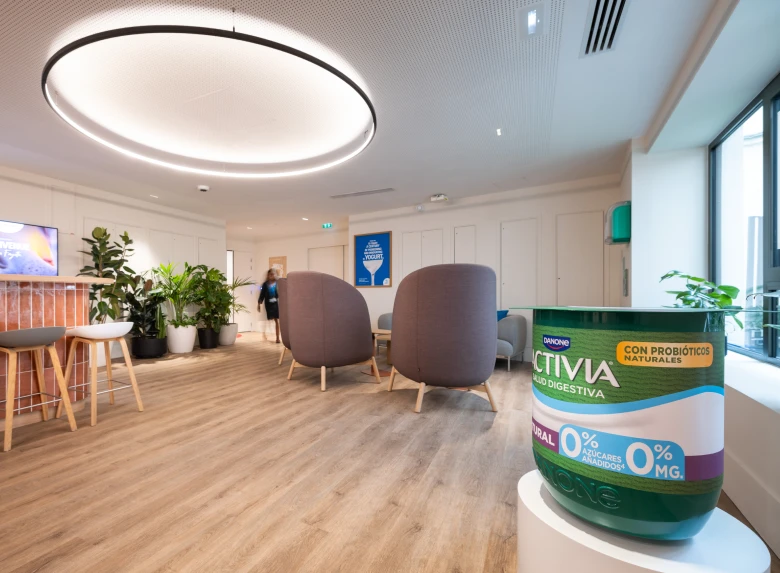
Danone chooses Pigment to nurture demand planning maturity





"I used to block two weeks every summer just to build the strategic plan. Now, if everyone sends their inputs on time, I can do it in a few days."
At a glance
- Unified planning: Danone bridges strategic and operational horizons, connecting supply chain and finance in a single platform.
- Flexible demand planning: Teams across markets can now plan at any level of granularity to assess strategic decisions
- Rapid implementation: A fully customized Pigment solution deployed in just three months for the S&OP and Strategic Planning use case, fostering alignment and collaboration across functions.
- Goodbye Excel: Replaced chaotic spreadsheets with structured plans that enable confident investment decisions.
- Dramatic time savings: Time eliminated on data crunching (two weeks to a day) means the team is free to focus on higher-value, more strategic tasks.
Sophie Hun is Integrated Business Planning Director, Demand & Performance, at French food and beverage behemoth Danone, with an annual revenue of €27 billion. She’s responsible for the infant milk and medical nutrition segment, which represents about 30% of that total.
It’s her job to ensure that each market and region delivers on the revenue goals Danone needs to meet financial objectives. And with Pigment, she’s able to do so in a far more efficient and effective way than ever before.
Baby steps: Life before Pigment
Danone’s long range demand planning process was previously built on Excel, augmented by a platform that specifically helped them plan over an 18-month rolling horizon. But they had nothing to support the big, strategic decisions around opening factories, developing production lines, and more that organizations like Danone really need to get right over a 3-5 year period.
And working in Excel had all the usual drawbacks - it’s slow, version control and collaboration is very difficult, and the inputs they were able to collect from functions like finance, marketing, and operations were high-level.
Sophie decided to evaluate a new tool, with a few specific criteria in mind:
- Flexibility, to allow Danone to process and manipulate their planning data in exactly the way they required
- Agility, to allow the team to easily make changes when necessary - because sometimes, plans change
- Capable of producing board-ready, impactful visualizations of data
After a period of consideration, Sophie’s team opted to go with Pigment.
Implementation with Statera Consulting
The decision was taken to work with Pigment partner Statera Consulting, and to build a model from a completely blank page - defining the data structure, logic, and visuals exactly as the team required.
In just three months, the team went through the research, build, testing and rollout phases. While the process can at times be intense - sometimes ten versions of the model were tested in a single day - but the results speak for themselves.
But Pigment understands that successful implementation isn’t just a technical process - you can build an incredible tool, but if no one uses it, it’s useless. According to Sophie:
“what I found impressive with Pigment was the level of service, not just implementation, but helping us sell the tool internally. They helped us design interfaces that are visually intuitive, train users, and manage change.”
The immediate impact
The Pigment application designed for Danone goes far beyond operational planning, it connects long-term strategy, financial forecasting, and supply chain capacity planning into one cohesive view.
Although initiated by the supply chain team, the plan is for the tool to be used across multiple functions.
For supply chain leaders, the granularity and interconnectivity are game-changing. Pigment allows capacity decisions based on accurate and consolidated data and simulated scenarios.
What happens if we shift production between regions? What’s the impact on cost, on cash, on margin? That kind of analysis took Danone days or weeks before - but now, it’s a matter of minutes.
Ready to see what’s next? Danone’s journey shows how connected, data-driven planning can transform strategic decisions across every function—from marketing to finance to supply chain. Discover how the next wave of innovation is pushing this even further with AI-powered automation. Watch our webinar: From Manual to Autonomous Supply Chain Planning with AI Agents
A formula for lasting success
Pigment and Danone have only been working together a short time, and already plenty has been achieved. But there are plans to take the partnership even further.
For example, Sophie sees potential in using Pigment to model end-to-end scenarios that connect financial and operational outcomes:
“The future for us is to link the supply chain side and the financial side seamlessly so that when we simulate a decision, we see its full P&L impact instantly.”
Danone is excited by the Analyst Agent that allows users to query data in plain language to further increase adoption of the tool.
Learn more
Explore more Pigment case studies below. Or, if you’d like to see it in action for yourself, book a demo today.




.webp)


